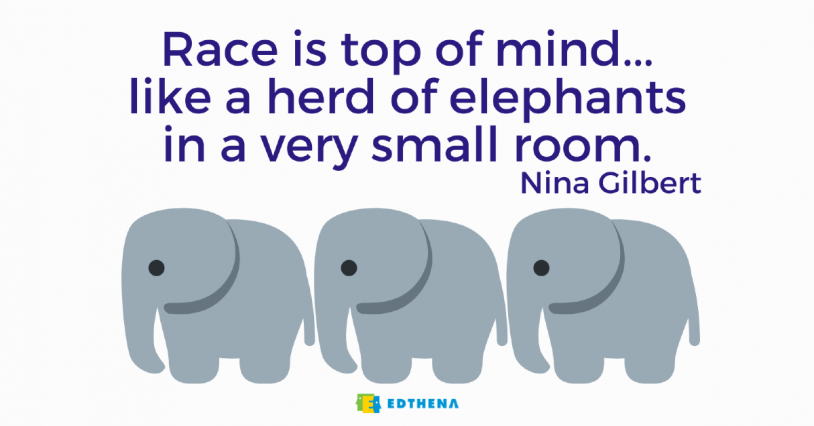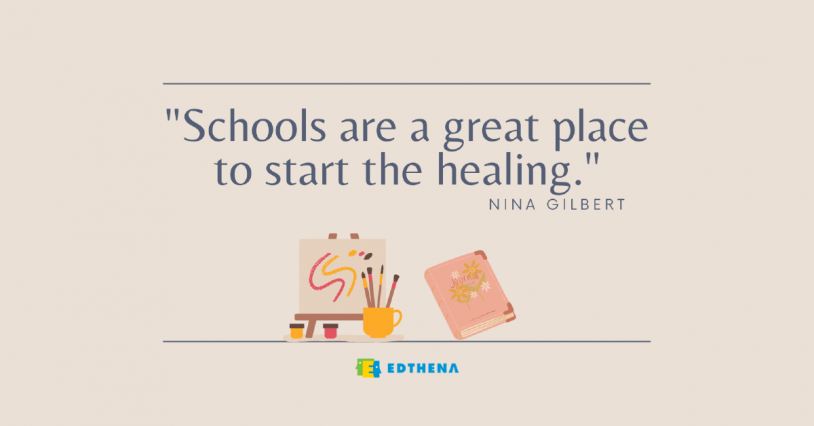Talking About Race and Social Justice In The Classroom
- Conversations on race and equity have been magnified
- Addressing these issues in classrooms requires a social and emotional approach for students
- Social justice is about all people being able to benefit from something better
Classrooms are often thought of as a microcosm of society. It should be no surprise then that equity and inequity are important topics to address with students.
In this #PLtogether Lounge Talk, Edthena founder and CEO Adam Geller spoke with Nina Gilbert about how conversations about race and social justice take place in the classroom.
Nina has been a teacher and launched schools in the past. She is now Director for the Center for Excellence and Education at Morehouse College. As the director, Nina’s experience is changing the way equity and diversity are discussed in higher ed.
Watch our interview with Nina above, and read on for highlights.
The topics of race and diversity have been magnified
Nina believes that in our current landscape, educators’ conversations around race and diversity have not just “shifted … [they’ve] been magnified.”

These conversations, which were once considered to be taboo, are now talked about openly on the news and social media, and even used for performance sketches on shows such as Saturday Night Live. As a result, talking about race and diversity is top of mind for many teachers and students.
Nina explained with a very vivid image: “it’s not even the elephant in the room, but it’s a herd of elephants in a very small room.”
Clearly, conversations must be had. Schools, though, can be polarizing places because school leaders and teachers have not always modeled what those conversations should look and sound like, nor had it modeled for them.
Practices in the classroom require a social-emotional approach
A strictly academic approach is not enough when students are experiencing so much.

Nina added, “Trauma-informed teaching strategies and practices are important, not just around these racial issues, but even for students who have experienced other types of trauma during COVID, previous to COVID who have been assaulted or abused in some way, or lost a parent.”
She continued, “If we don’t give students an outlet, a way to express some of what they’re feeling and experiencing, it just bubbles up and explodes.”
Without a way to express emotions, kids may release their tensions in a way that results in disciplinary problems or disengagement. Teachers often don’t know how to support these students, especially those living through pervasive racism and poverty.
Storytelling and having outlets such as art and journals to express themselves is important for students to process difficult topics.
Nina emphasized, “Schools are a great place to start the healing. But without a curriculum, without a mandate, it’s not going to happen … because there are so many other unmet needs that are nonacademic.”
Indeed, topics and skills that may not have an aligned state standard or test are still imperative to support students.
How do we define social justice?
So how can teachers help students when discussing topics related to social justice?
Nina framed issues of justice as “ways [we are] all the beneficiaries when things are better and what would make that better.” As an example, she cited issues of equitable access to clean water.
But social justice change will not happen overnight in a classroom, nor even in a marking period.
Nina stated, “We’re talking about over 400 years of [racial injustice] … There’s some historically inaccurate teaching that has to be undone and unlearned.”
In addition to talking about social justice in broad ways, culturally responsive teaching, where educators are responsive to all students’ cultures and backgrounds, is key. When issues of race, equity, and social justice can be openly and freely discussed, individuals will work together for change.
Missed our last chat with Nina? View the video and read the highlights here!
Interested in other #PLtogether chats? Find more here.


